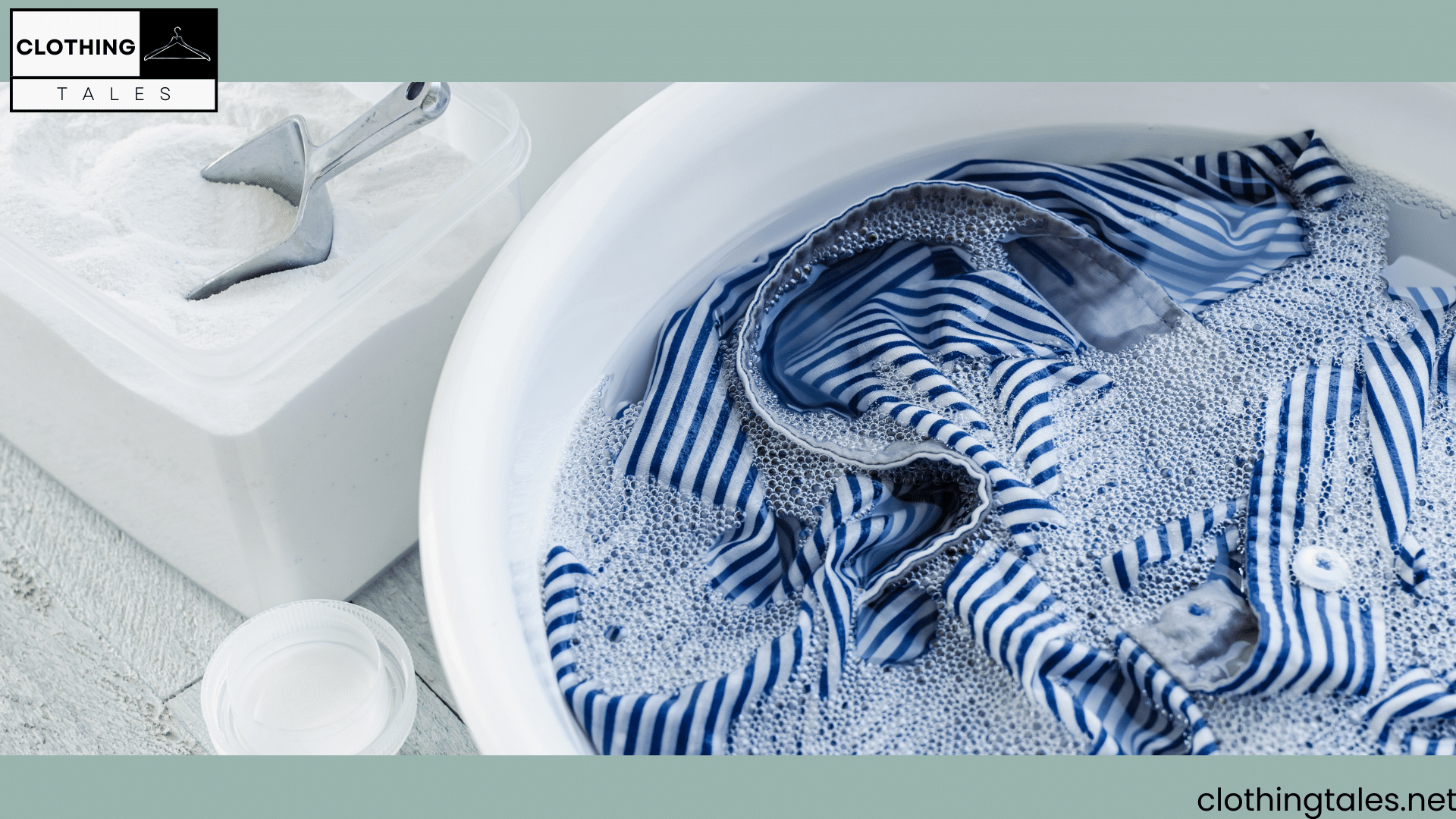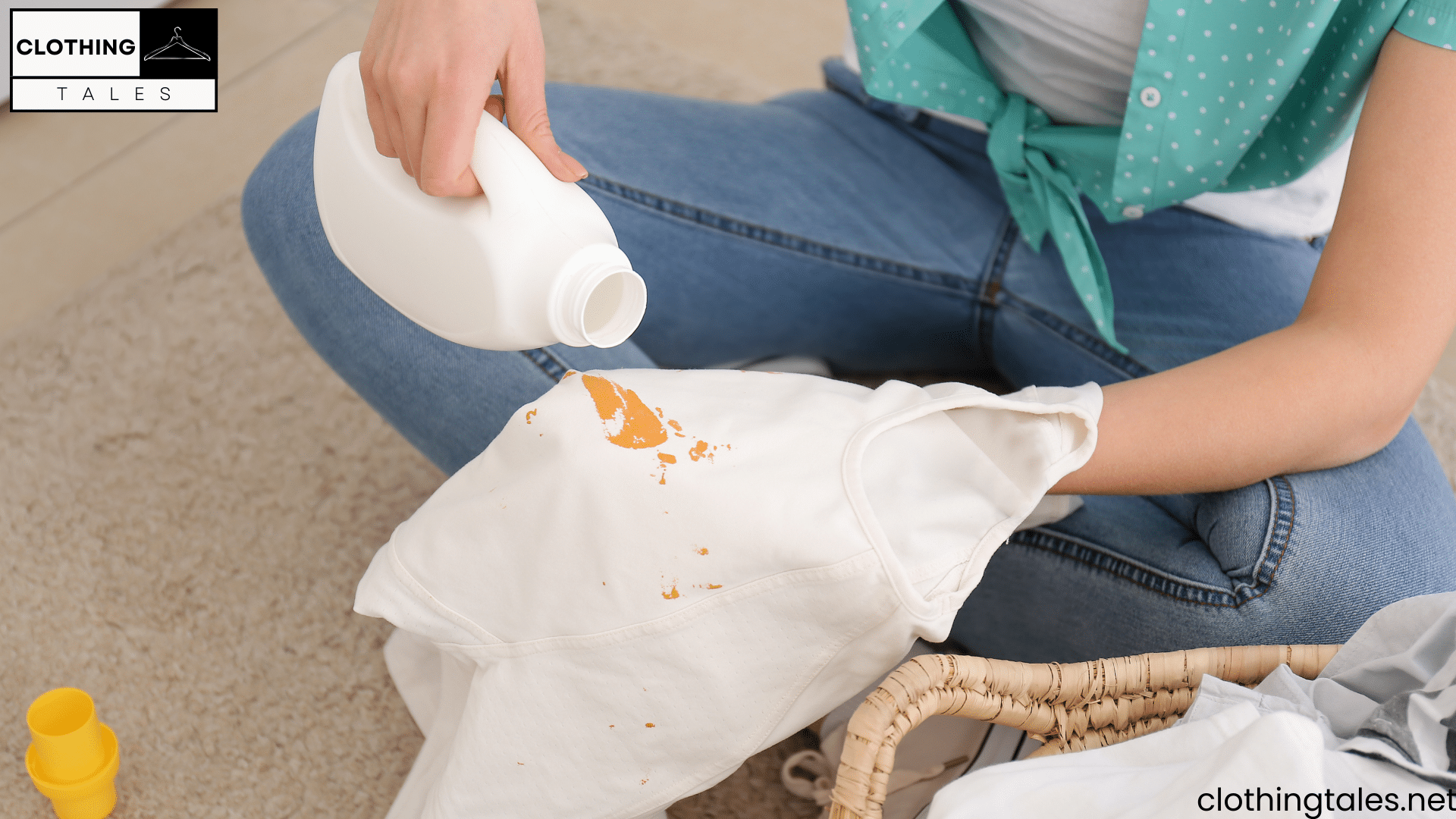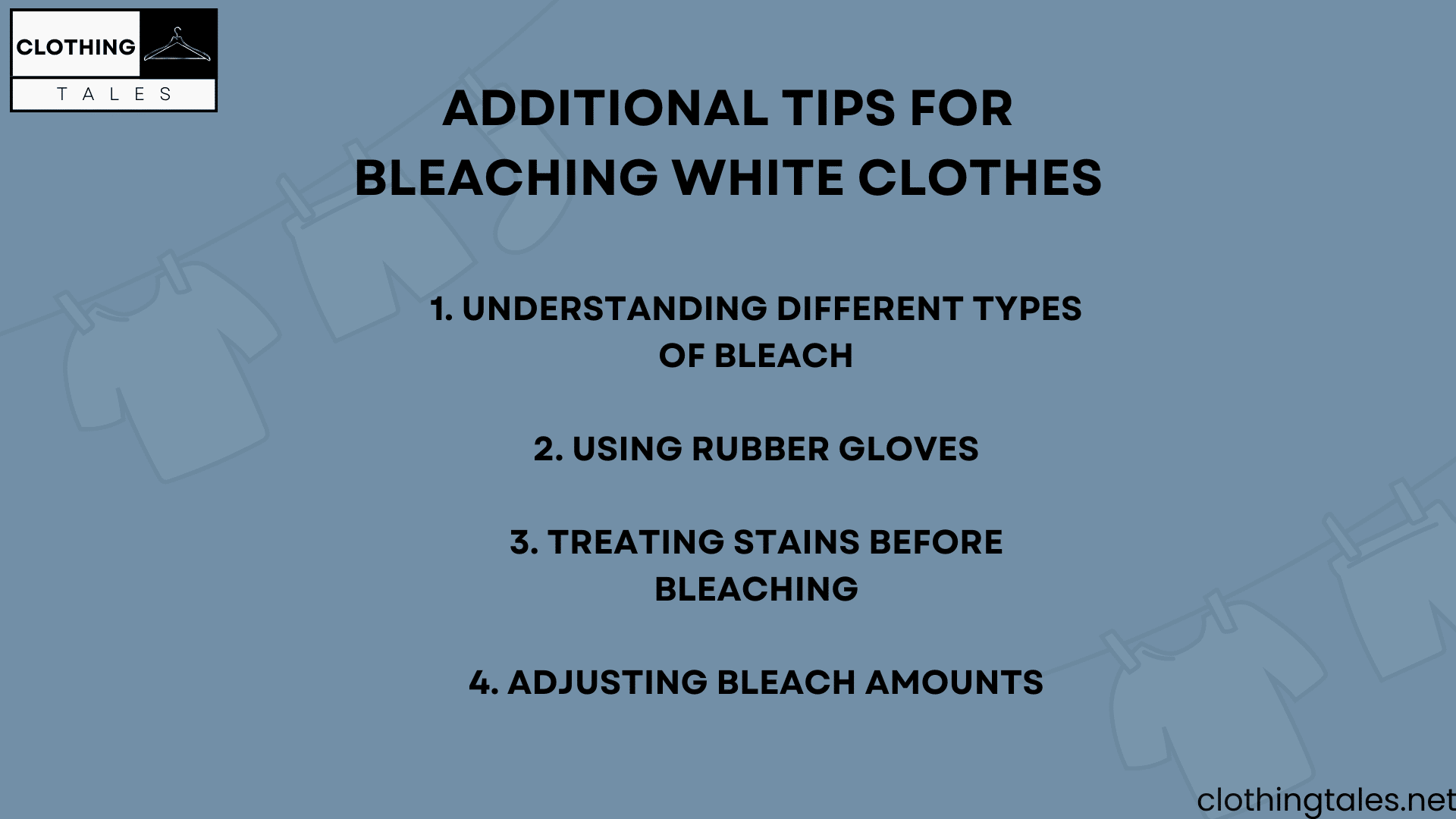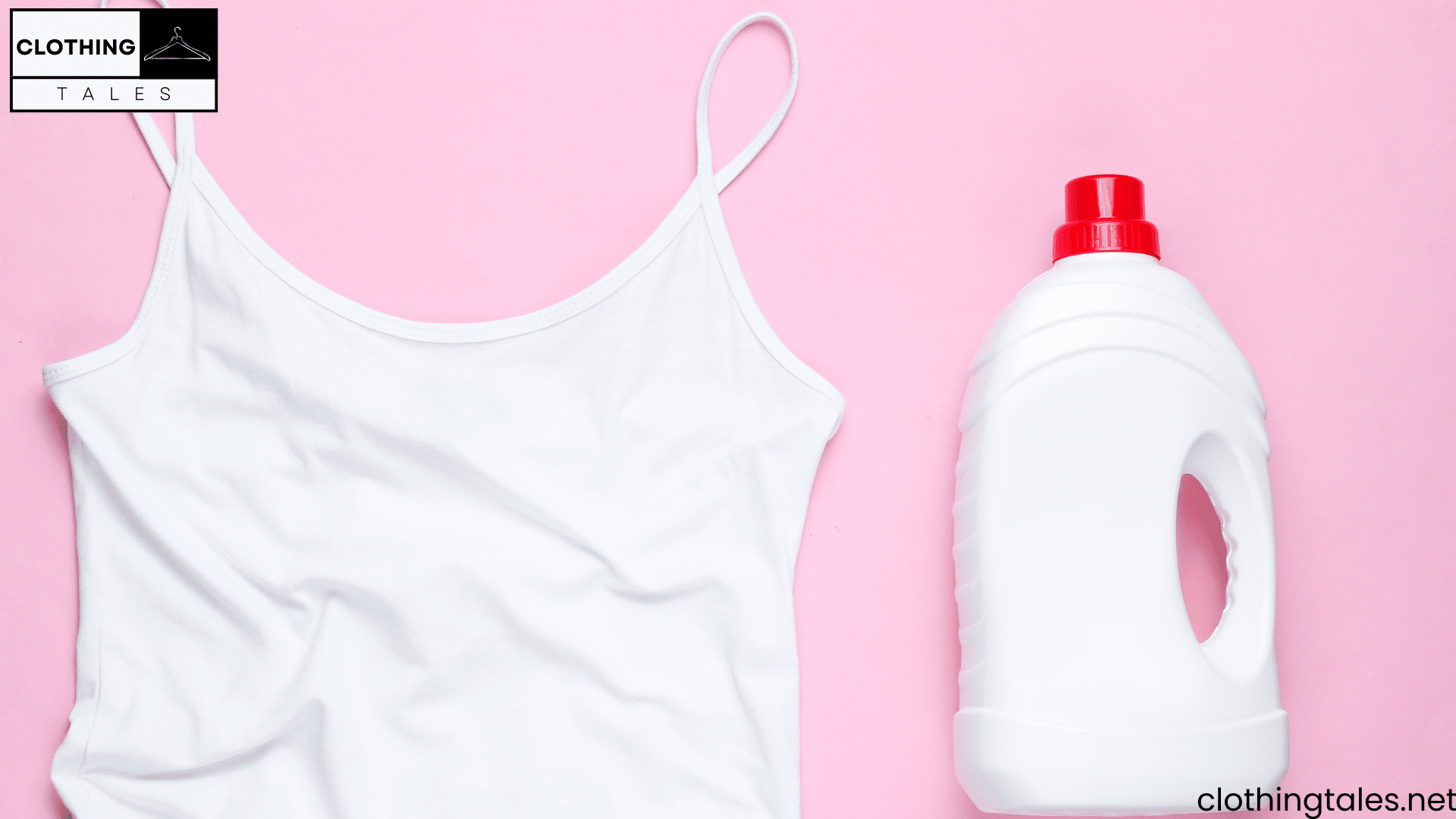Table of Contents
On every Sunday morning, rain or shine, you have to wash your clothes. For working people, Sunday is laundry day. While washing your clothes, you discover a stubborn stain on your favorite white shirt. It’s a frustrating sight. Maybe it’s a stubborn red wine mark from last night’s dinner or an ink blot from a forgotten pen. The stain won’t come out despite using stain remover and scrubbing hard. This is frustrating because you want to keep your favorite shirt looking perfectly clean. Don’t worry. You can use bleach to remove stains from your white clothes. If you’re wondering how to use bleach and in what quantity to remove the stain altogether, we can help with that, too, in our detailed article. Let’s start by learning the step-by-step method to remove the stain with bleach.
A step-by-step guide to safe bleaching

Carefully follow these instructions to safely bleach your white clothing and maintain its quality and brightness over time. If you follow the instructions and thoroughly read the care label, you can ensure your clothes get the proper care without risking damage.
1. Check the Care Label
Before bleaching, always check the care label on your garments. Some fabrics may not be suitable for bleaching or require specific precautions. This step ensures you don’t damage your clothes by bleaching white shirts or other garments.
2. Prepare Your Materials
Gather your materials: rubber gloves to protect your hands, bleach products such as chlorine bleach or hydrogen peroxide, and laundry detergent. Ensure you have a well-ventilated area for washing white clothes with bleach.
3. Dilute the Bleach
For safe bleach use, prepare a bleach solution. Mix 1 cup of chlorine bleach per liter of water. Alternatively, mix 1 cup of hydrogen peroxide per liter of water for a gentler approach. Always add the bleach for white clothes to the water, not the other way around, to prevent splashing.

4. Use Hot Water
The heat helps activate the bleach, so wash your whites in the hottest water recommended on the care label. This ensures maximum effectiveness when bleaching white clothes.
5. Add Bleach Safely
If your washing machine has a bleach dispenser, add the bleach solution during the wash cycles. Otherwise, add the diluted bleach to the water in the machine before adding clothes. Be cautious not to spill bleach directly on fabrics.
If you accidentally put bleach on colored clothes and don’t know what to do, we have the perfect solution in our detailed guide. Let’s get started and explore with our article Reviving Fabrics: Defeating Bleach Stains on Clothes
6. Let It Soak
Allow your white clothes to soak in the bleach solution for 5-10 minutes. This duration ensures that the bleach per liter of water has enough time to lift stains and brighten fabrics without causing damage.
7. Wash and Rinse
After soaking, run the wash cycles as usual with laundry detergent. Ensure you follow the care label’s instructions for the appropriate amount of bleach and detergent. This step helps remove any residual bleach and dirt from the fabric.

8. Rinse Thoroughly
Once the wash cycles are complete, rinse your white clothes thoroughly to remove any remaining bleach or detergent. Use cool water for rinsing to help set the brightness of your clothes.
9. Air Dry
Finally, air dry your bleached white clothes. Avoid using the dryer immediately after bleaching clothes, as heat can set stains and potentially damage fabrics.
10. Repeat as Needed
Repeat the bleaching white clothes process periodically for stubborn stains or to maintain brightness. Always check for any signs of wear or damage to ensure your garments remain in top condition.
Additional Tips for Bleaching White Clothes

Bleaching white clothes is a tried-and-true method for maintaining their brightness and freshness. Whether tackling tough stains or simply refreshing your whites, understanding the nuances of bleaching can make a great difference in your laundry routine. Here are some additional tips to enhance your bleaching process:
1. Understanding Different Types of Bleach
Bleach comes in various forms, each suited for different purposes:
Chlorine Bleach: Known for its aggressive stain-fighting capabilities, chlorine bleach (sodium hypochlorite) is highly effective in removing tough stains and brightening whites. However, it can be harsh on fabrics and should be used cautiously. Always dilute according to the manufacturer’s instructions and avoid prolonged exposure to delicate fabrics.
Oxygen Bleach (Hydrogen Peroxide): Oxygen bleach is a gentler alternative suitable for delicate fabrics and colored items labeled as safe for bleach. It is less harsh than chlorine bleach but may require longer soaking to achieve desired results.
2. Using Rubber Gloves
Always wear rubber gloves to protect your skin from irritation and potential chemical burns when handling bleach, especially chlorine bleach. This precaution is essential to ensure your safety during the bleaching process.

3. Treating Stains Before Bleaching
For stubborn stains on white garments, it’s advisable to pre-treat the affected areas before bleaching. Use a stain remover suitable for the fabric, or apply a baking soda and water paste directly to the stain. Allow the pre-treatment to sit for a few minutes before proceeding with the bleach wash.
4. Adjusting Bleach Amounts
The amount of bleach used should be adjusted based on the load size and the fabric type. For optimal results, follow the manufacturer’s guidelines regarding bleach concentration and recommended usage. Too much bleach can weaken fabrics over time, so measure carefully to avoid unnecessary wear and tear.
Conclusion
Bright, white clothes are achievable with the right techniques and bleach solutions. By understanding the different types of bleach, practicing proper safety measures, and considering environmental considerations, you can effectively bleach white clothes while preserving their quality and longevity. Incorporate these additional tips into your laundry routine to elevate your results and maintain your wardrobe’s pristine appearance.
Remember always to prioritize safety when handling bleach and follow garment care labels and manufacturer guidelines. With these steps and additional tips, you can ensure that your white clothes remain vibrant and fresh, ready to complement any outfit with their crisp, clean look.
